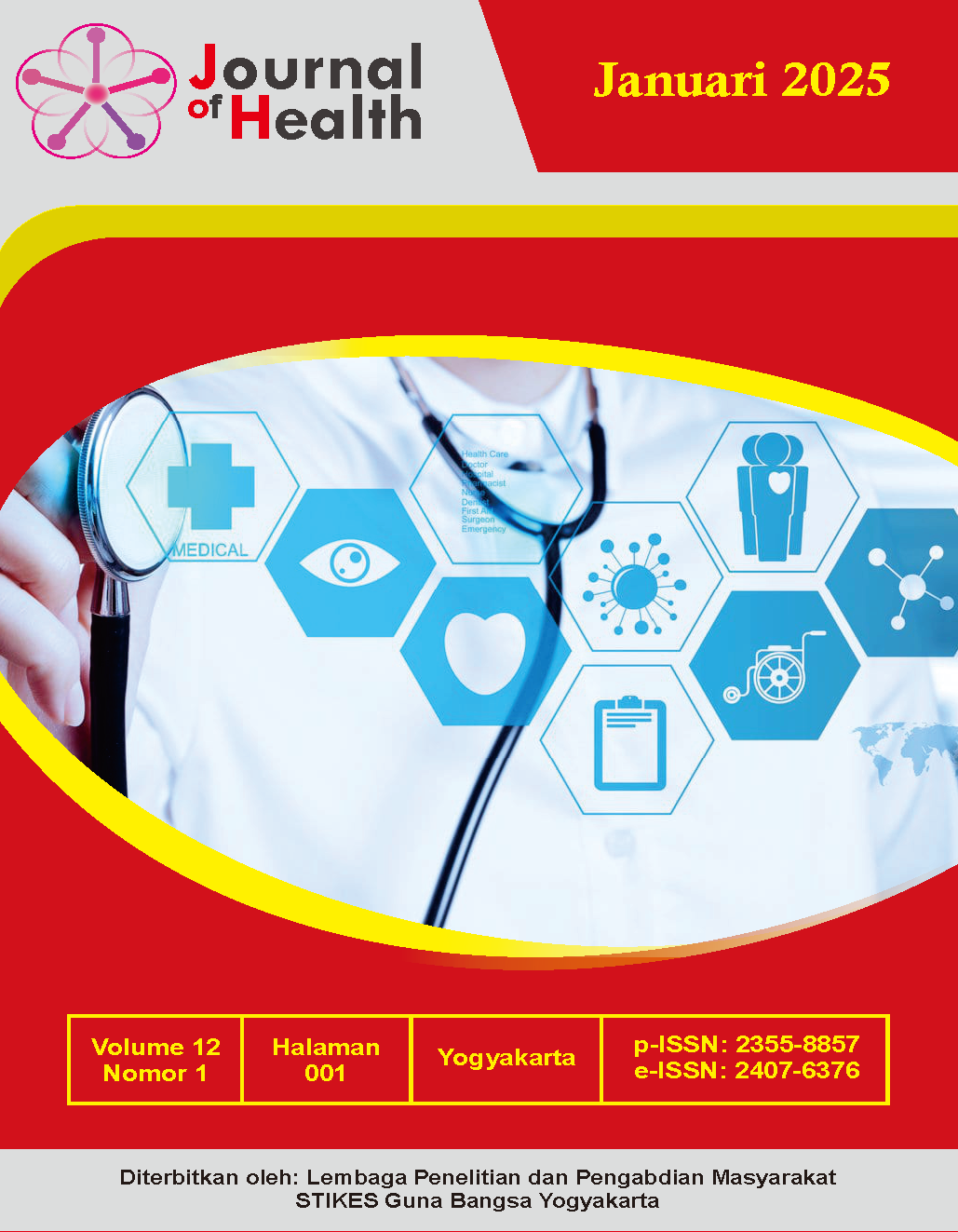Effectiveness of Complementary Therapy Decoction of Celery Leaves and Bay Leaves on Reducing Hypertension in Paku Alam Village
Efektivitas Terapi Komplementer Rebusan Daun Seledri Dan Daun Salam Terhadap Penurunan Hipertensi Di Desa Paku Alam
Abstract
Complementary therapy is an alternative non-pharmacological treatment that can control blood pressure in hypertension sufferers. The apiin compound content in celery leaves and bay leaves is believed to be able to reduce high blood pressure. To determine the effectiveness of complementary therapy of boiled celery leaves and bay leaves on reducing hypertension. The research uses a quantitative approach with a Quasi Experiment One Group With Pretest-Posttest Design. The instruments in this research were observation sheets and aneroid spygmomanometer. The sample was 14 hypertensive patients in Paku Alam Village with a purposive sampling technique. Data analysis used the Wilcoxon test and data collection used observation sheets. From the results of Wilcoxon's statistical tests before and after the test, it can be concluded that the pre and post systolic and diastolic results of celery leaves achieved significant results.The effectiveness of complementary therapy of boiled celery leaves and bay leaves has an effect on reducing hypertension in the community in Paku Alam Village.The results showed that after giving a decoction of celery leaves and bay leaves, the blood pressure of respondents decreased. Wilcoxon's test results showed that bay leaf intake was more effective in reducing high blood pressure, there was a significant difference after giving bay leaf decoction.
Downloads
Copyright (c) 2025 Trisna Devina, Muhammad Riduansyah, Rifa’atul Mahmudah

This work is licensed under a Creative Commons Attribution 4.0 International License.
Authors who publish with this journal agree to the following terms:
- Authors retain copyright and grant the journal right of first publication with the work simultaneously licensed under a Creative Commons Attribution License (CC-BY), that allows others to share the work with an acknowledgment of the work's authorship and initial publication in this journal.
- Authors are able to enter into separate, additional contractual arrangements for the non-exclusive distribution of the journal's published version of the work (e.g., post it to an institutional repository or publish it in a book), with an acknowledgment of its initial publication in this journal.
- Authors are permitted and encouraged to post their work online (e.g., in institutional repositories or on their website) prior to and during the submission process, as it can lead to productive exchanges, as well as earlier and greater citation of published work (See The Effect of Open Access).












